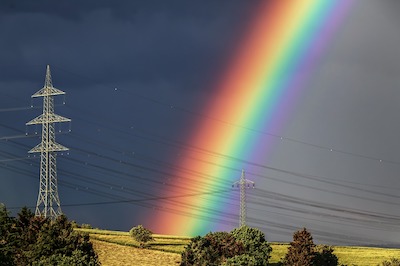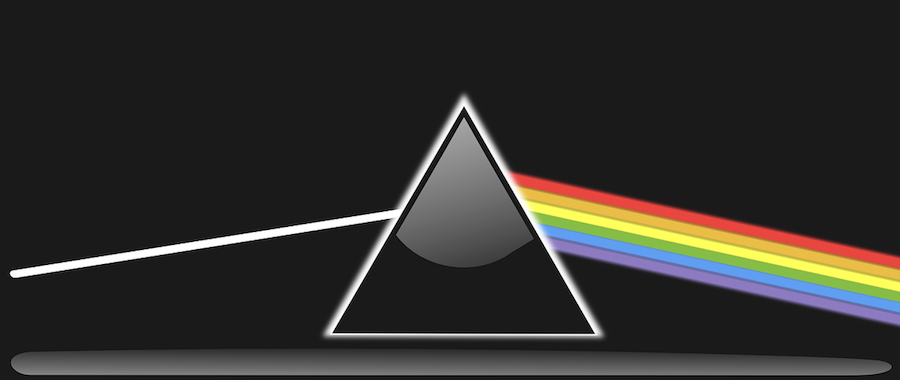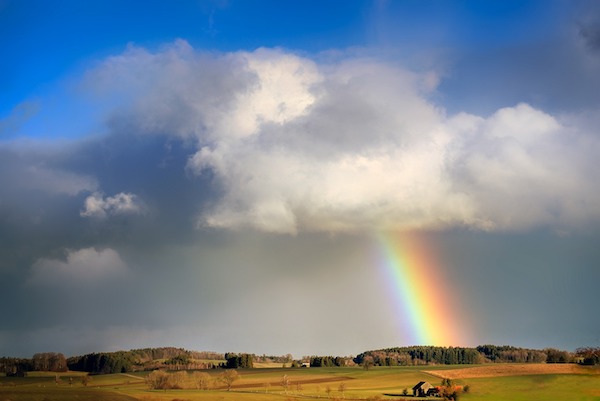Today's SALE! Save BIG w/ *FREE DELIVERY - Use Code: FREEDEL20
Today's Sale ! Save Big w/ *Free Delivery - Use Code: FREEDEL20
Rainbows are a natural phenomenon that occur as a result of the refraction of light through water droplets
Rainbows: The Refraction of Light
The rainbow is a natural phenomenon that humans have been observing for centuries. Once upon a time, we had no way to know just how these colorful arches were formed. We didn't know where they came from, or what purpose they might have served. In today's world, scientists have been able to figure out exactly what the rainbow is.
What is a Rainbow?
A rainbow is a colorful arc that appears in the sky during and after rain, and at times near bodies of water that produce mist, such as waterfalls. When sunlight shines through these water drops, the light on the other side becomes an array of colors. Rainbows are not always seen after rain; proper conditions must be met in order for one to form. The sky must be clear and the sun must be visible for light to reach residual raindrops. This is why rainbows are not common during heavy rain- the sun is blocked by rain clouds. Rainbows have had plenty of historical significance, representing hope and good fortune in many cultures around the world. In difficult times, the rainbow is often used as a symbol to remind people that unfortunate situations do end, the same way a rainbow appears after a storm.
-
The Cultural Significance of the Rainbow During Societal Hardships and the COVID-19 Pandemic
-
What Causes a Rainbow, When Can It Be Seen, and What Happens Inside a Water Droplet

What is Refraction?
The process of refraction occurs all around us. It gives us the ability to see with our eyes, the ability to create cameras, glasses, and microscopes, and is responsible for phenomena such as mirages, and our main topic, rainbows. Refraction is a scientific principle explaining the way light bends as it passes through one transparent substance to another. When light travels through a transparent substance, it slows down, which changes its angle depending on the refractive index of the substance it passes through. The refractive index of a substance is responsible for producing the exact angle light bends when it passes through it. When light travels from a low-index substance to a high index substance, it will slow down the speed of light. An example is when light travels through air into glass. Air has an index of 1.00 and glass has a 1.5 index.

The Path of Light through a Droplet
When light passes through a water droplet, it is moving from a substance with a lower refractive index to a higher refractive index. As previously stated, water has an index of 1.33, and air has an index of 1.00. This means that the speed of light is decreased. This change in speed results in a change in the angle the light bends. The surface of the water droplet refracts the light and changes its angle, causing it to bounce off the inside of the droplet. Once light exits the droplet, it shows the effect of dispersion, which is what causes the projection of the rainbow.
-
Refraction Inside a Water Droplet Explained - Reflection of Color
-
Light Through Water Droplets and The Formation of the Rainbow
-
What Happens to Light Inside a Spherical Water Droplet and How It Scatters
How Does Refraction Cause Colors to Appear?
Refraction causes colors to appear through a process called dispersion. Dispersion is when white light is divided into different wavelengths, which appear as different colors depending on the angle it bends through a transparent object. The colors of the rainbow appear as they do because of these specific angles.
Colors have a corresponding frequency and wavelength and are seen in order as the wavelength decreases and the frequency increases. Wavelengths are measured in nanometers, abbreviated as nm, and frequencies are measured in terahertz, abbreviated as THz. For example, the first color of the rainbow is red, which has an average frequency of 480 THz and a wavelength of 635 nm. This trend continues through the rainbow with orange having a frequency of 510 THz and a wavelength of 590nm, yellow with a frequency and wavelength of 540 THz and 560 nm, and so on. These wavelengths combined make up what we see as white, which is why when they are broken up through refraction and dispersion, they appear as each individual color in order of longest to shortest wavelengths.
The Formation of the Rainbow
The rainbow forms most often after it rains when the sun comes out and moisture from the rain is retained in the air. When sunlight passes through these moisture droplets, it refracts at different angles resulting in the dispersion of white light into the colorful bands we see. A rainbow is the combination of thousands of water droplets dispersing and projecting light from the sun. Sometimes this light is reflected twice within a water droplet, which results in a second rainbow being projected above the first.
If you're shopping for a florist sale "near me" to order and send same day flowers today, take a look at our online flower store delivery service and discover that it is the best and cheapest option.
![[Avas Flowers] Avas Flowers](https://www.avasflowers.net/newimg/avas-logo-new.png)

